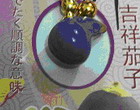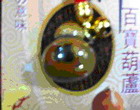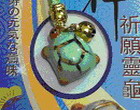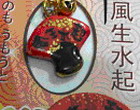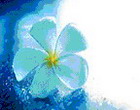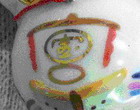Collecting porcelain dolls has become a very popular hobby not just in the US but also throughout the world. Who would not be enticed to own and collect these tiny, delicate and beautiful dolls in our own shelves?
Dolls are definitely not just for children. Grown-ups also have this fascination towards porcelain dolls because having these dolls transport us back to their childhood – back when everything seems to be a lot less complicated. Seeing these dolls displayed in our homes would definitely bring back the genuine smiles that we once had when we were still young.
If this fascination towards porcelain dolls is just starting to brew inside of you, then why not start having a porcelain doll collection? You can use the tips below when you start shopping for these porcelain dolls.
1.Know what type of dolls to collect
Before you start buying porcelain dolls, you must know first what type of dolls to collect. Do you want to be a hard-core collector and have those vintage, antique dolls in your fold? Or do you simply want to collect these dolls so that you can put them up as home decorations?
There are a lot of porcelain dolls that are very popular among collectors. These include Victorian dolls, fairy dolls, oriental dolls and even baby dolls! Whatever type of porcelain doll you would wish to collect; there are certainly a lot of them that you can find.
2. Do your research
After knowing what type of doll you will collect, you have to learn some things about these dolls. It is essential to know what constitutes a quality porcelain doll so that your precious money will not come to waste. If you intend to collect antique and limited edition porcelain dolls, you should know where the reputable antique shops are located so that what you’d buy are truly antique.
Again, if you just want to collect these dolls to decorate your home, some little flaws can be disregarded, but serious collectors certainly must be more aware of buying a genuine antique doll.
3.Consult with the experts
Talk with the people who are experts in the field of antique doll collecting on how you can start with your collection and make it grow in the future. For instance, one mistake that a new antique doll collector often commits is having an interest in restoring a vintage porcelain doll. Sure, these dolls already have some signs of wear and tear, but these scratches are what make them valuable as time progresses. You should hold your horses first and disregard any thought of doll restoration. Seek advice from the experts first before making any alteration.
4. Go to auction sites online
The Internet is one place where you can get loads of information on collecting porcelain dolls. Go to popular auction sites such as Ebay to find out what porcelain dolls are popular among collectors. You can do some canvassing already by comparing the prices of every doll.
Dolls are definitely not just for children. Grown-ups also have this fascination towards porcelain dolls because having these dolls transport us back to their childhood – back when everything seems to be a lot less complicated. Seeing these dolls displayed in our homes would definitely bring back the genuine smiles that we once had when we were still young.
If this fascination towards porcelain dolls is just starting to brew inside of you, then why not start having a porcelain doll collection? You can use the tips below when you start shopping for these porcelain dolls.
1.Know what type of dolls to collect
Before you start buying porcelain dolls, you must know first what type of dolls to collect. Do you want to be a hard-core collector and have those vintage, antique dolls in your fold? Or do you simply want to collect these dolls so that you can put them up as home decorations?
There are a lot of porcelain dolls that are very popular among collectors. These include Victorian dolls, fairy dolls, oriental dolls and even baby dolls! Whatever type of porcelain doll you would wish to collect; there are certainly a lot of them that you can find.
2. Do your research
After knowing what type of doll you will collect, you have to learn some things about these dolls. It is essential to know what constitutes a quality porcelain doll so that your precious money will not come to waste. If you intend to collect antique and limited edition porcelain dolls, you should know where the reputable antique shops are located so that what you’d buy are truly antique.
Again, if you just want to collect these dolls to decorate your home, some little flaws can be disregarded, but serious collectors certainly must be more aware of buying a genuine antique doll.
3.Consult with the experts
Talk with the people who are experts in the field of antique doll collecting on how you can start with your collection and make it grow in the future. For instance, one mistake that a new antique doll collector often commits is having an interest in restoring a vintage porcelain doll. Sure, these dolls already have some signs of wear and tear, but these scratches are what make them valuable as time progresses. You should hold your horses first and disregard any thought of doll restoration. Seek advice from the experts first before making any alteration.
4. Go to auction sites online
The Internet is one place where you can get loads of information on collecting porcelain dolls. Go to popular auction sites such as Ebay to find out what porcelain dolls are popular among collectors. You can do some canvassing already by comparing the prices of every doll.



